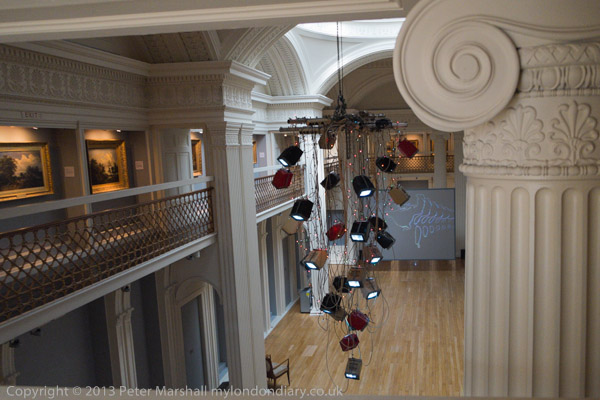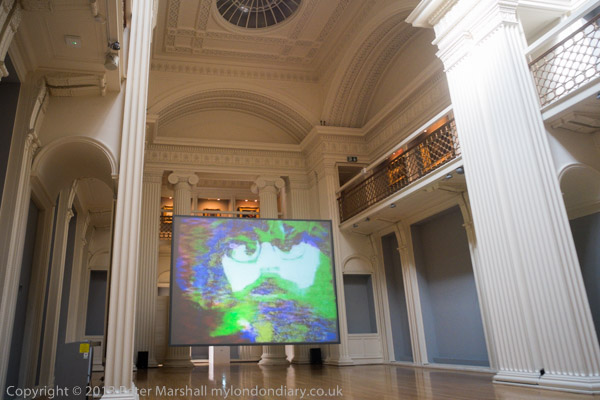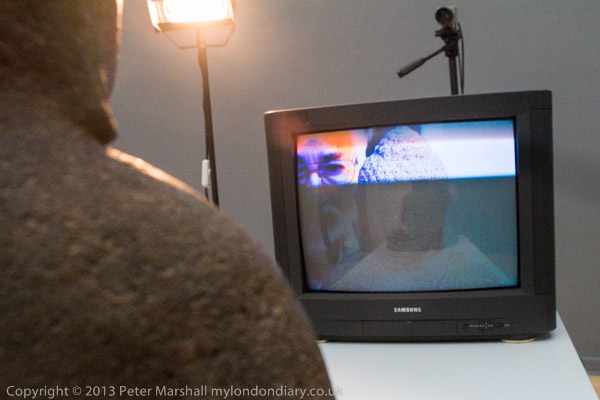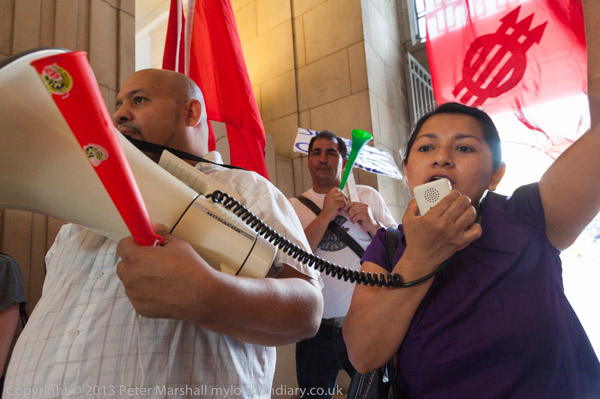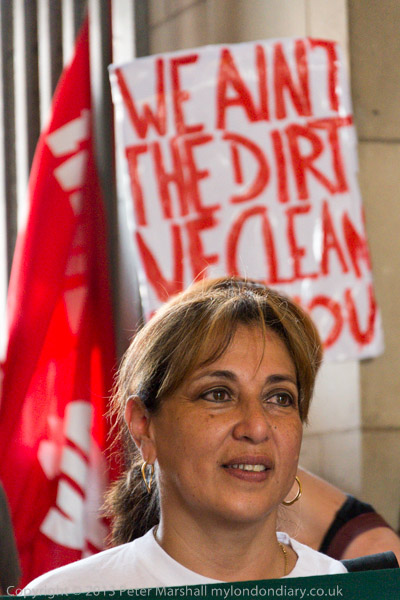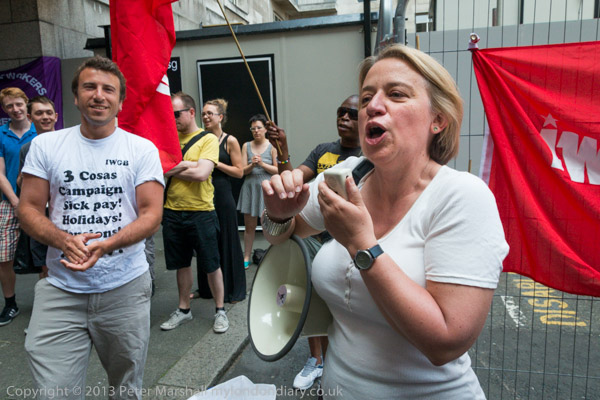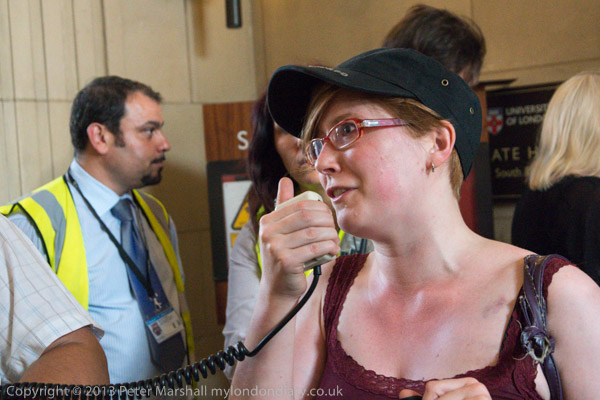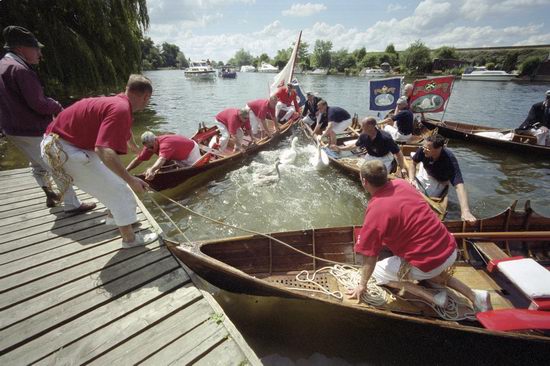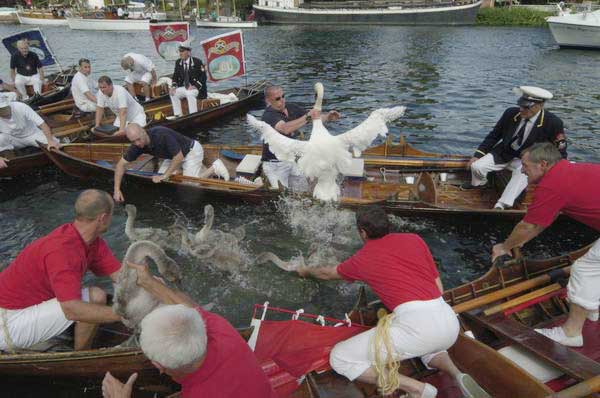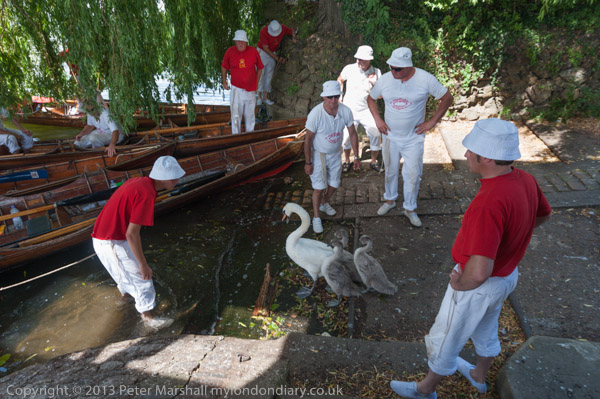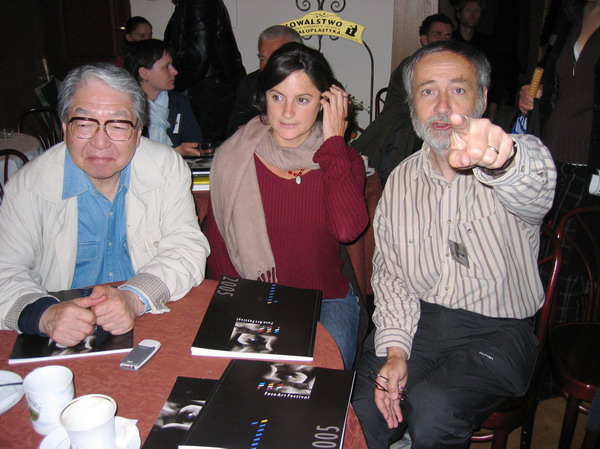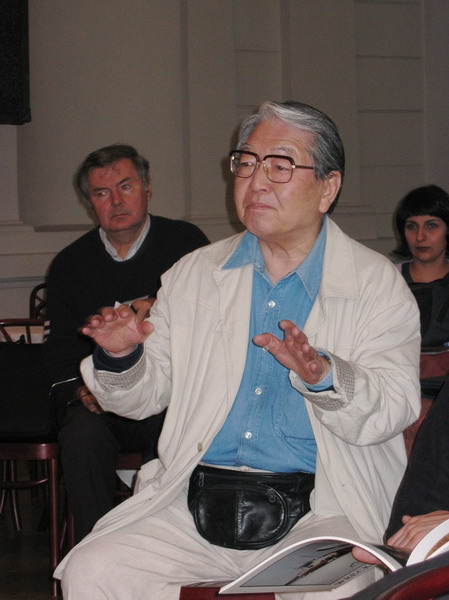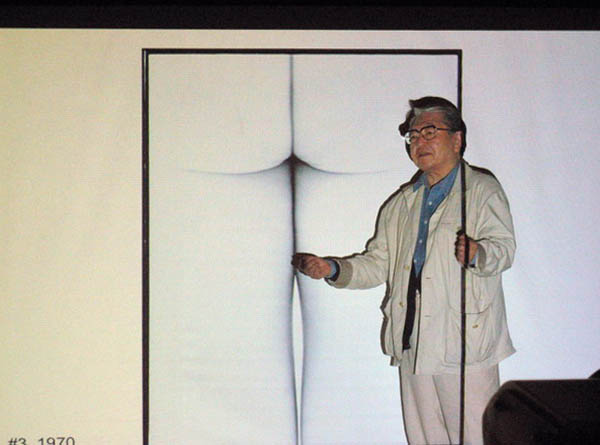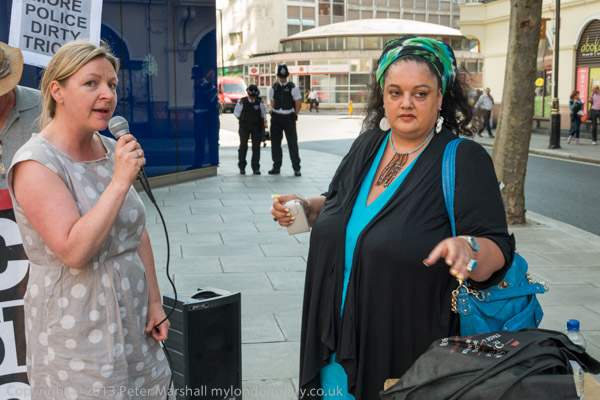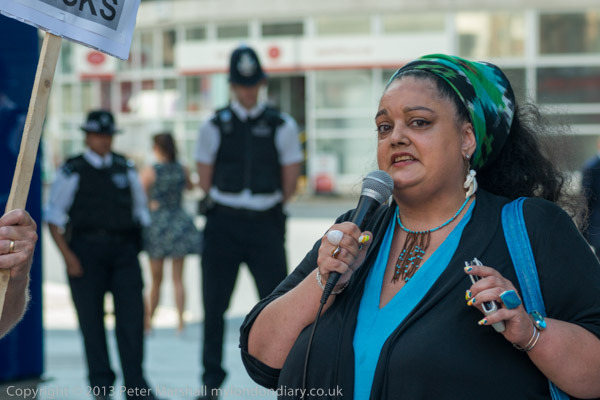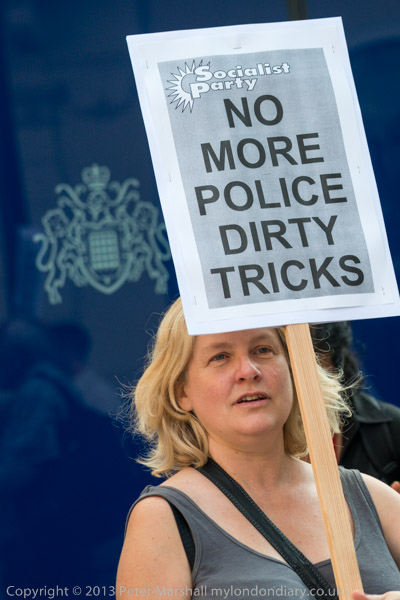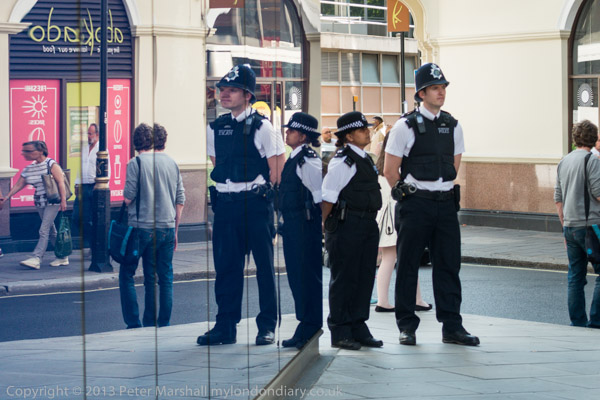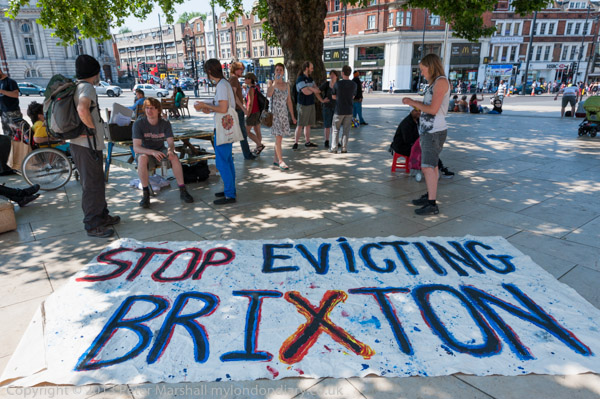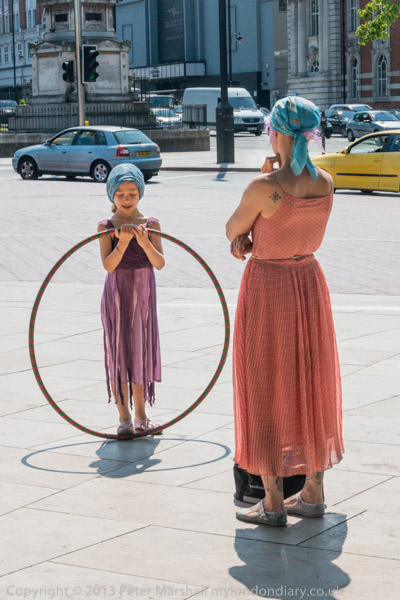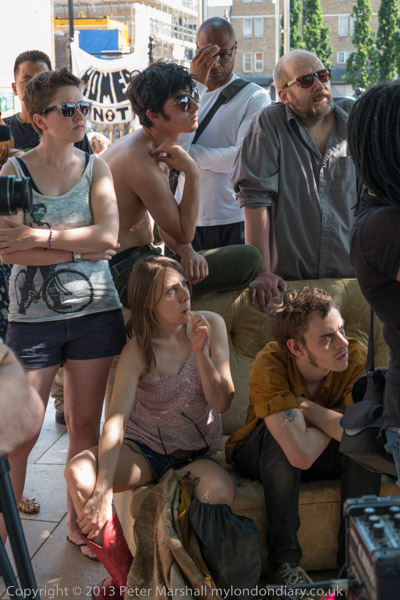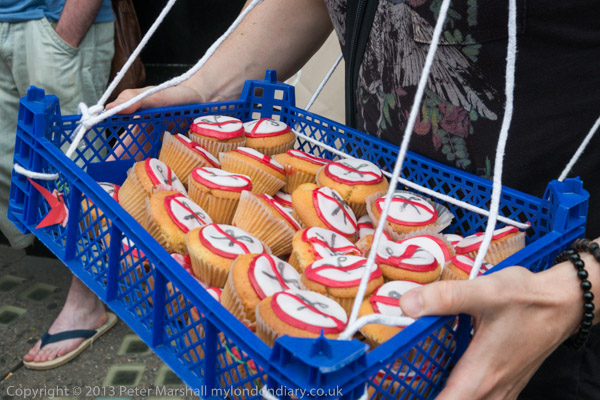
UK Uncut cakes to hand out and eat – but the rest of the food went to local food banks after the demo
This morning my wife was volunteering at our local food bank, as she does a couple of mornings most weeks, sorting and packing up food and delivering it to those who need it. Despite living in a reasonably affluent area on the fringe of London, there are plenty of them. Many because they have had benefits stopped. Or because they have to wait until benefits are sorted out, or while they appeal decisions – and now are somehow expected to be able to manage to live without any income at all.
Hard to believe but true – over half a million people in the UK now rely on food banks to keep them from starving.
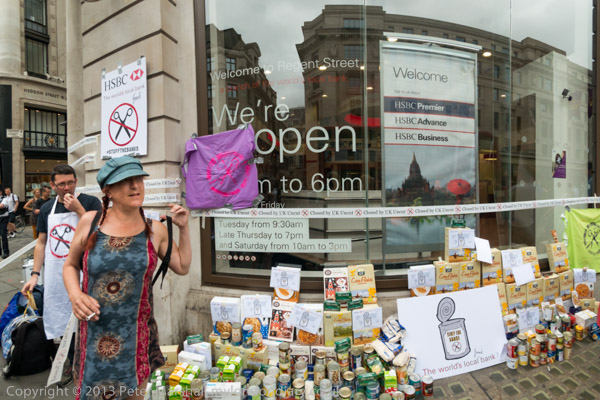
The 10.5mm let me get the food bank in from a short distance
UK Uncut makes the point that the UK banks received enormous financial support from the public finances – variously estimated at between £700 and £26,500 per taxpayer (the higher figure ignoring the eventual recouping of some of the support when the banks are sold back into the private sector and the lower taking a particularly rosy view of the return when this happens.) They call for an end to ‘bank welfare’, and point out that the avoidance of taxes by large companies and the wealthy costs the country more than will be saved by the government cuts that disproportionately impact on the poor and disabled. And the banking sector is the biggest user of overseas ‘tax havens’ to avoid paying UK taxes.
The ‘big four’ UK banks, Barclays, HSBC, Lloyds and RBS, are reported to have over 1,600 tax haven subsidiaries between them, with HSBC being the largest offender, with over 550. The amounts lost to the UK are several billions of pounds. Changes to the Controlled Foreign Company (CFC) rules by the government which came into effect this January were estimated to give another billion to the users of tax havens, a huge bonus while the rest of us were suffering from the cuts
UK Uncut’s protests at the premises of tax dodgers have certainly put the issue onto the political agenda, and made HMRC at least seem to take a little more action, as well as persuading some companies to contribute a few million more. Perhaps by setting up food banks at HSBC branches they will put the spotlight on the use of overseas tax havens by the banks to avoid taxes, and also on the Department for Work and Pensions, directly responsible for a large proportion of that half a million needing to use food banks, who appear to be conducting their own private war against welfare.
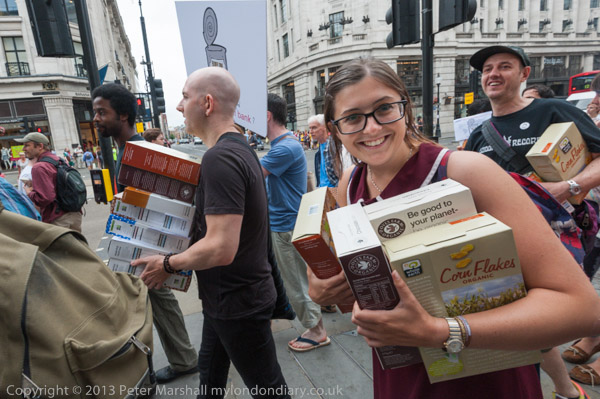
The food bank on the move to Oxford St HSBC
Photographically the event held few problems, although the pavements where the food banks were set up were at times rather crowded, not least with other photographers. The Oxford St pavement is rather narrow – the street should have been pedestrianised long ago – and police pushed the protesters back to allow pedestrians to walk past.
They stood along the edge a yard or two apart, but objected firmly when I stood between them to take photographs, arguing that I was “causing an obstruction.” Clearly that wasn’t the case – and I was if anything less of an obstruction than they were, but logic isn’t a powerful argument against handcuffs and I had to move.
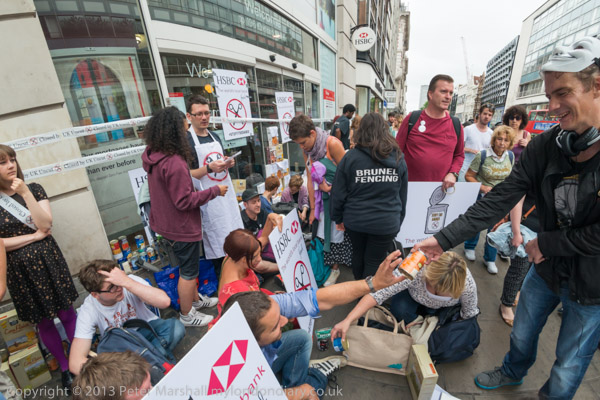
Photographing from inside the protest with the 10.5mm
So I went into the protest, using the 10.5mm to work at very close range. The alternative, to stand on the narrow strip in the middle of the road with a long lens, with a view obstructed by a line of police and the passing pedestrians, was taken by most of the press, but it wasn’t a good idea.
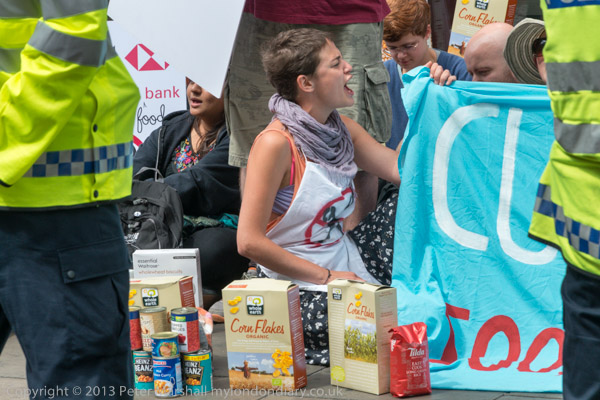
From the middle of Oxford St with the 70-300mm.
There are perhaps rather too many pictures from the event on My London Diary, but it was difficult to edit, as there were so many that I liked. Take a look at them at UK Uncut HSBC Food Banks.
________________________________________________________
My London Diary : Buildings of London : River Lea/Lee Valley : London’s Industrial Heritage
All photographs on this and my other sites, unless otherwise stated are by Peter Marshall and are available for reproduction or can be bought as prints.
To order prints or reproduce images
________________________________________________________
